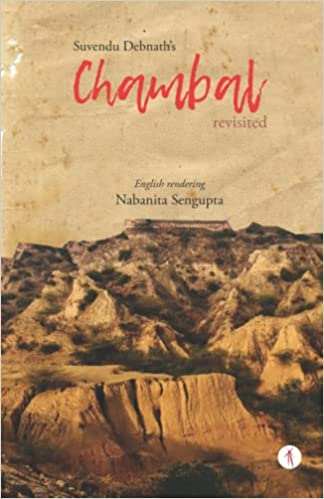
Book Title: Chambal Revisited
Author: Nabanita Sengupta
Publisher: Hawakal Publishers, India
Date of Publication: February 2022
ISBN #: 978-9391431037
Reviewer: Dr. Sutanuka Ghosh Roy
Enigmatic Chambal
The name “Chambal” has a magnetic pull because of the element of drama in it and it immediately pulls us to the images of dacoits on horses, terror, and blood-cuddling violence in our mindscape. As children growing up in Bengal, we were hooked to Tarun Bhaduri’s Abhisapta Chambal (Cursed Chambal). Journalist Suvendu Debnath in Abar Chambal “has portrayed Chambal through myriad lenses—looking at it through economic, geographical, social, communal, and gender perspectives. His gaze is that of a seeker, a person who tries to understand a place by interacting with its inhabitants”. Academic, poet, translator Nabanita Sengupta has done a fine task of translating Suvendu Debnath’s Abar Chambal from Bengali to English. In today’s world, regional languages are usually neglected. A unique way of conserving the regional language and regional literature that is being gulped by the all-powerful English language is to use English translations to sustain local cultures and practices. As one holds the book, one is curious to know about the cursed river –Chambal (beehed) also the metamorphosis of an ordinary man/woman into a baghi (dacoit). Chambal revisited is a narrative full of layers. What makes these innocent people of Chambal take up arms? Why eye for an eye? Why this thirst for blood? We get a thorough knowledge of the unfamiliar terrain with the river Chambal flowing from the South to the North.
Chambal is infested with a caste-ridden society and is a portrayal of a real India. The book is a proof as to how to this day dacoit gangs are mostly organized along caste lines with Ahir, Rajput, Gujjar, Kurmi, Malhar, Dalit, and Brahmin gangs having followings belonging to their castes and receiving political patronage. Baghis of one caste generally targets almost exclusively other castes. The likes of Maan Singh, Malkhan Singh, Lala Ram, Madho Singh, and their empire are still replete with their memories and romanticism with terror. Chambal Revisited has thus touched upon the caste class equation in the Indian society, unmasking the undercover violence towards women belonging to lower castes. The exploitation of these dalit women in India operates beyond the law and with the tacit acquiescence of an entirely exploited class held in thrall by a load of conventional role obligations. And the subaltern cannot speak. So what do they do? They pick up arms.
The success of the book lies in its authentic portrayal of not only men but also women baghis, making it a powerful commentary on various forms of exploitation perpetrated on the gendered subaltern—Putli Bai, Neelam, Renu Yadav, Seema Parihar, and others. Chambal Revisited also decodes the aftermath of the baghis who give up their arms and try to enter the mainstream of life. With very little help from the government, local administration, and families they end their lives in abject poverty. The story of Madho Singh is an eye-opener—the man who was the other name of terror had to go down and opt for road-shadows as a magician. Sengupta has effortlessly retained the local flavor and this book will surely help the researchers to open up to newer discourses on Chambal. The stunning book cover by author-publisher Bitan Chakraborty adds to the charm and intrigue of the story that has been aptly translated for the global readers.
Reviewer Bio:
Dr. Sutanuka Ghosh Roy is an Associate Professor in the Department of English at Tarakeswar Degree College, The University of Burdwan, India. She is a reviewer, a critic, and a poet. The titles of her books are Critical Inquiry: Text, Context, and Perspectives and Commentaries: Elucidating Poetry, Rassundari Dasi’s Amar Jiban: A Comprehensive Study.

